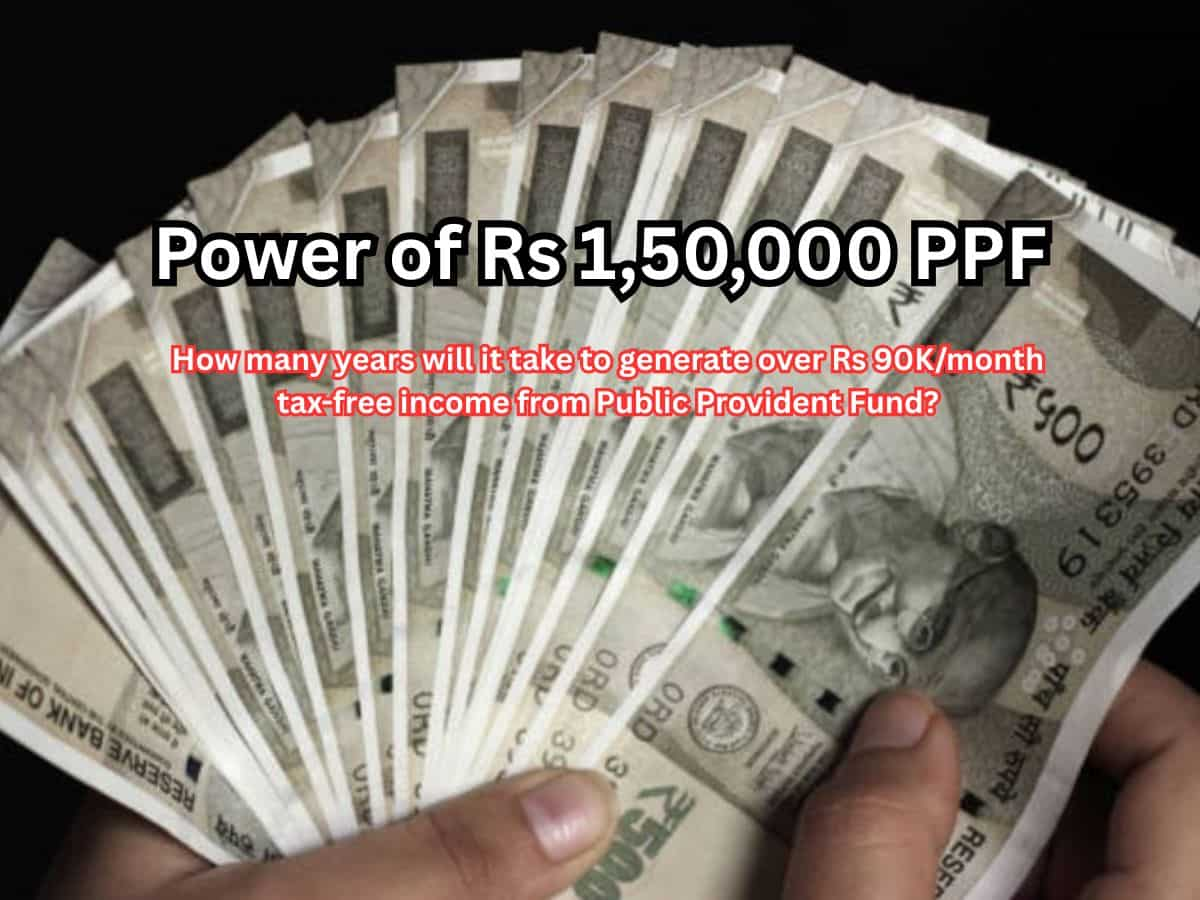Public Provident Fund is a government-backed scheme that is popularly known as PPF. You can earn tax-free deposits, interest, and maturity amount with a PPF account under Section 80C. You can also avail loans against your Public Provident Fund balance from the 3rd to the 6th year of investment. The lock-in period of a PPF account is 15 years. After 15 years, the account holders can extend it further in 5-year blocks.
Read along to find out more about the benefits of owning a PPF account. Also, let’s find out how many years it will take to generate over Rs 90,000/month tax-free income from the Public Provident Fund.
What is minimum and maximum PPF investment?
The minimum deposit in a year is Rs 500, whereas the maximum deposit allowed in a year is Rs 1.5 lakh.
Tax benefits in PPF
Contributions up to Rs 1.5 lakh in PPF are eligible for tax deductions under Section 80C; you can earn tax-free deposits, interest, and maturity amount with a PPF account under Section 80C.
Can you withdraw from PPF before maturity period of 15 years?
According to the withdrawal regulations, you can access the funds from your PPF Account once they reach maturity. This means that after the 15-year PPF lock-in period, you can withdraw the accumulated funds with interest and close the Account. Partial withdrawals are allowed only after the completion of 5 financial years, after the end of 1st year in which the deposit was made.
How much can you withdraw at end of preceding year?
- You are eligible to partially withdraw a certain amount of money.
- A partial withdrawal facility is available after the completion of 5 financial years from the date the PPF account was opened.
- You can withdraw up to 50 per cent of the balance that is available after the completion of the fourth financial year.
- Only one partial withdrawal is allowed in a financial year.
What happens to PPF after 15 years?
After 15 years of the maturity period, investors can continue their accounts with or without deposits.
How to get over Rs 90,000/month income from PPF?
To generate over Rs 90,000/month from PPF, one has to begin with a Rs 1.50 lakh investment every year and continue it till the maturity period of 15 years. Later, you can extend the account for blocks of 5 years each for maximum return.
How many years will it take to build over Rs 90,000/month tax free income?
It will approximately take 30 years to reach this target corpus.
What will be PPF corpus after 15 years?
The investment amount in 15 years will be Rs 22,50,000, the estimated interest will be Rs 18,18,209, and the estimated maturity will be Rs 40,68,209. The investor can take an extension of 5 years and keep investing Rs 1.50 lakh a year in the same way as before.
What will be PPF corpus after 20 years?
In 20 years, the total investment will be Rs 30,00,000, the estimated interest will be Rs 36,58,288, and the estimated corpus will be Rs 66,58,288. At this stage, the investor can take another extension of 5 years and continue the practice of investing Rs 1.50 lakh a year.
What will be PPF corpus after 25 years?
In 25 years, the total investment will be Rs 37,50,000, the estimated interest will be Rs 65,58,015, and the estimated corpus will be Rs 1,03,08,015.
What will be PPF corpus after 30 years?
In 30 years, the total investment will be Rs 45,00,000, the estimated interest amount will be Rs 1,09,50,911, and the estimated corpus will be Rs 1,54,50,911.
What is next step after 30 years of investment?
From here onwards, account holders can start withdrawing interest on the entire corpus. During extensions, the account holder is allowed to withdraw the interest amount once a year.
What will be your interest amount?
At a 7.1 per cent interest rate, the interest in a year will be Rs 12,87,575, which will be Rs 91,417 a month.
Also Read: How can you generate Rs 1 lakh/month tax-free income from Public Provident Fund?
Anurag Dhole is a seasoned journalist and content writer with a passion for delivering timely, accurate, and engaging stories. With over 8 years of experience in digital media, she covers a wide range of topics—from breaking news and politics to business insights and cultural trends. Jane's writing style blends clarity with depth, aiming to inform and inspire readers in a fast-paced media landscape. When she’s not chasing stories, she’s likely reading investigative features or exploring local cafés for her next writing spot.






